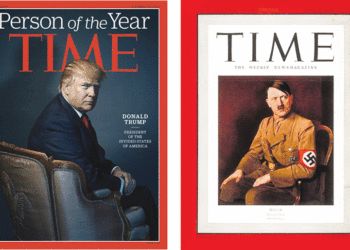In the newspaper business, you never know which story will strike a nerve, provoke controversy among readers. A seemingly inflammatory article is published without a peep from readers; and then an apparently innocuous item sparks a rash of contending phone calls, letters and e-mails.
The Dec. 9 Hanuka special edition, for example, featured the winning artwork in our 20th annual Hanuka Cover Contest. The imaginative young artist created a hanukia of characters representing various walks of life — rabbi, doctor, painter, judge, farmer, etc. The text in the piece proclamed: “All Jews United in Honor of Chanuka.”
We noticed that the figures in the artwork were all of the male gender, which led to several complaints. Why did we publish an illustration that excluded women from the “united” Jewish community? One man called to complain, as a woman (his wife?) in the background enumerated the grievances that he dutifully relayed.
Perhaps this is what is called a teachable moment. First, the Hanuka Cover Contest is about fun and creativity; and next year we will encourage young artists to represent both Festival of Lights themes and the diversity of the Jewish community. You know, it’s not just about men and women: there are Jews of color, young and old, and those who are able-bodied and those with physical disabilities.
Regarding the specific positions of men and women in the Jewish community, the Forward newspaper (Dec. 16, 2011) published its annual survey of 76 national Jewish organizations, which “paints a picture of communal stagnation in gender equality, as the number of women in leadership roles remains at the same low level, and the gap between male and female salaries has grown even larger.”
In the “Jewish business,” it is well known that men dominate. The Forward points out that gender inequality remains entrenched.
“In the sphere of women’s leadership and compensation, the Jewish world continues to lag dramatically behind the overall not-for-profit community,” the newspaper reports.
GuideStar, an organization in Washington that collects and summarizes the tax returns that charities file with the Internal Revenue Service, reported in September that “only 16 percent of nonprofits with budgets of more than $50 million have female chief executives, while 64 percent of organizations with budgets of under $250,000 are led by women.
“In the Forward survey, by contrast, only nine of the 76 organizations are led by women — the same number as last year, and a drop from 11 in 2009. And since the Forward added two organizations to the list, the percentage of women is lower still, slightly less than 12 percent. The wage gap in the Jewish world, where female CEOs earn slightly more than 62 cents for every dollar earned by their male counterparts, is also wider than in GuideStar’s report. And it worsened from 67 cents in 2010.”
In other words, the organized Jewish world, at the national level, looks a lot like our Hanuka menora.
The Forward also published an editorial commenting on its salary survey story. The editorial, titled “Our Own 1%,” asked: “Why is there only one woman running a major federation when women elsewhere are in charge of large corporations and entire countries? Why is there only one woman among the top religious and educational leaders when women elsewhere head the nation’s most prestigious universities, and when some rabbinical schools are graduating more women than men?
“The message isn’t subtle: Women need not apply. Hope is stifled.”
Looking for remedies, I happened to find the Web site of a group called Advancing Women Professionals and the Jewish Community (AWP). AWP has studied the impediments to women’s advancement, specifically in the realm of the federations, and has identified some strategies for leveling the playing field. It seems that many of these strategies — which have been employed in various professions, corporations and academia — need to be developed within Jewish communal organizations. The Jewish organizational culture has to change, if talented women are to ascend to the top spots and to be paid fairly for their efforts.
The Forward salary survey shows that several of the machers are pulling down the big bucks. For example, one of the top earners in the Jewish business is Stephen Hoffman, president of the Jewish Community Federation of Cleveland, whose 2010 salary was north of $640,000.
“Jewish communal leadership is a privilege, but it’s also a tough job, and it deserves to be well rewarded,” the Forward editorial noted. “Those rewards should be fairly distributed and open to all, not reserved for a segment of our community and essentially off-limits to the rest. Organizations asking for our dollars and our shekels must prove that they are using that money wisely and fairly. This is no time to protect our 1%.”
— Mordecai Specktor / editor@ajwnews.com
(American Jewish World, 12.23.11)



















